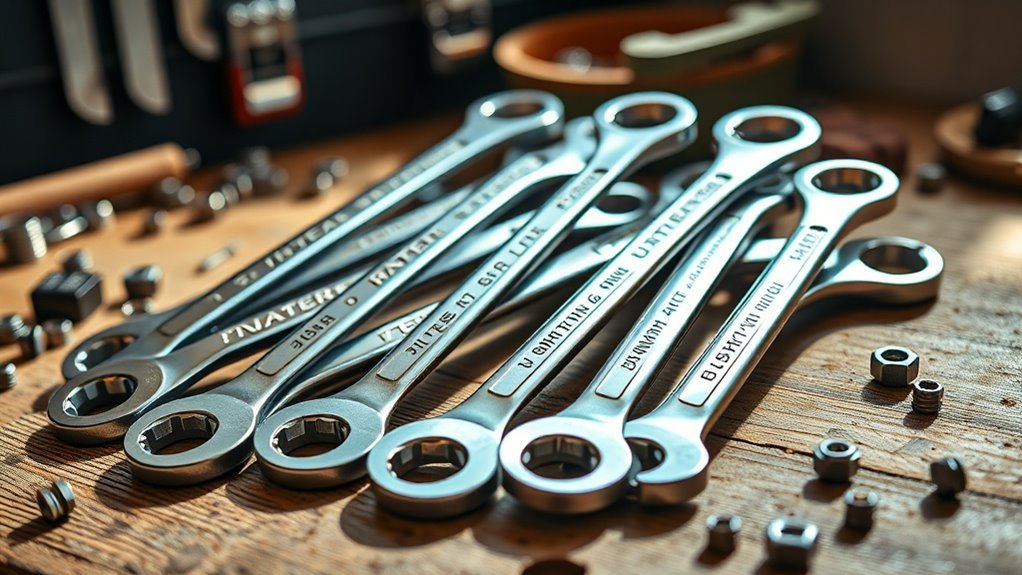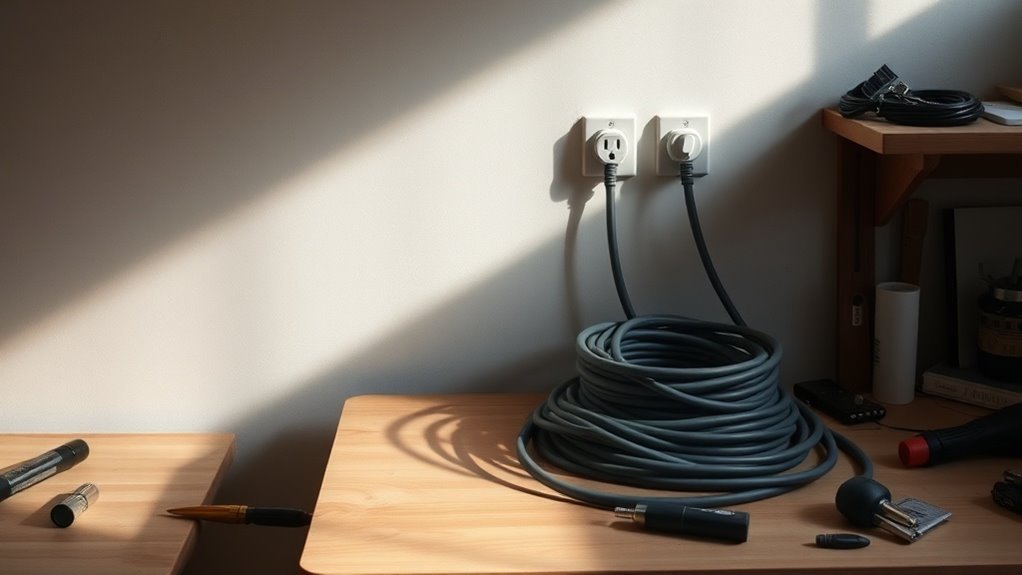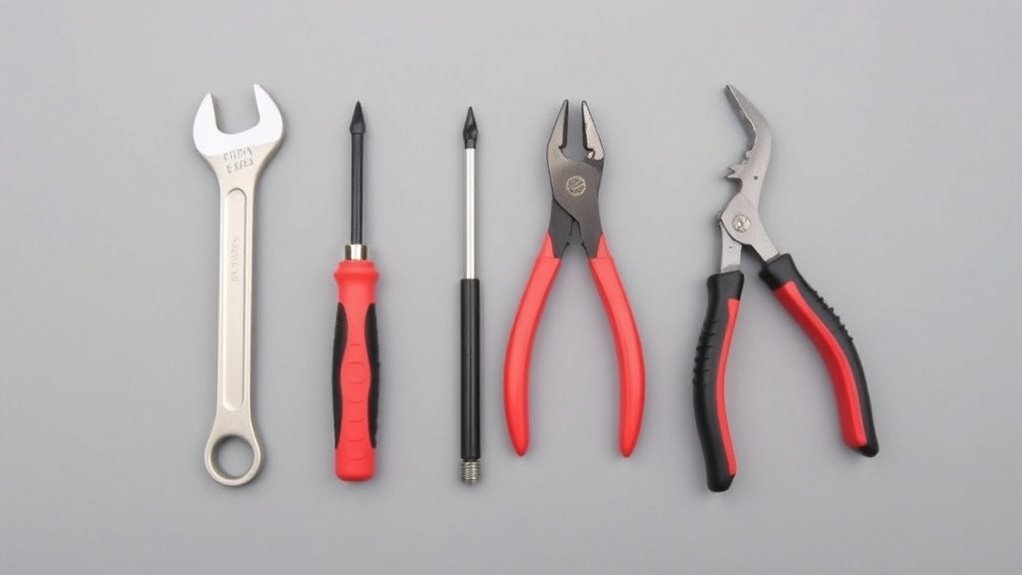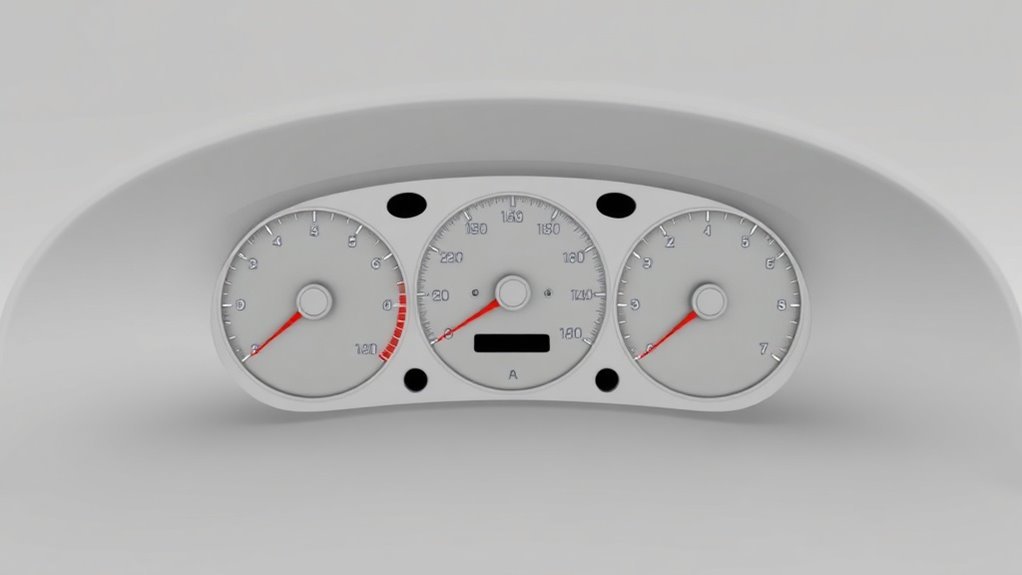Compact Multitools: Design Principles for Portability
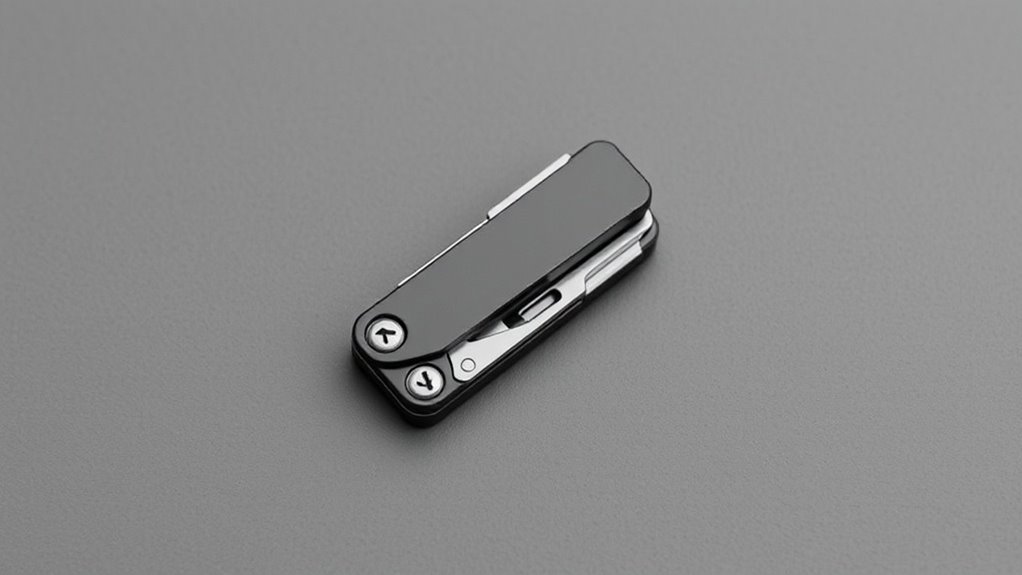
When designing compact multitools, you should prioritize ergonomics for comfort and ease of use. Lightweight yet durable materials guarantee portability without sacrificing strength. Compact folding mechanisms keep tools manageable, while user-centric features like quick-access tools and safety locks enhance functionality. Aesthetics also matter, as a sleek design can improve overall appeal. By focusing on these principles, you’ll find multitools that suit your needs perfectly, and there’s even more to explore on enhancing their utility.
Key Takeaways
- Ergonomic grips in compact multitools enhance comfort, allowing users to apply force efficiently without hand fatigue during prolonged use.
- Lightweight materials like aluminum balance portability and strength, making multitools easier to carry without compromising durability.
- Compact folding mechanisms, such as butterfly designs, enable efficient nesting of tools, minimizing bulk for better portability.
- Quick-access features improve usability by allowing seamless transitions between tasks without fumbling for tools.
- User-centric design, based on feedback, ensures that compact multitools meet real-life needs and improve overall functionality and ease of use.
The Importance of Ergonomics in Multitool Design
When it comes to multitools, ergonomics plays an essential role in their design. You want a tool that feels comfortable to hold and easy to maneuver, especially when you’re tackling various tasks.
If a multitool is awkward or heavy, it can lead to fatigue, making it less effective in the long run. A well-designed grip guarantees that you can apply the necessary force without straining your hands.
Additionally, the layout of functions impacts how quickly and efficiently you can switch between tasks. You need to have intuitive access to each tool, preventing wasted time or frustration.
The intuitive layout of functions ensures quick task switching, minimizing frustration and maximizing efficiency.
In the end, good ergonomics enhances your overall experience, making your multitool not just a handy gadget but a reliable partner in your projects. Investing in ergonomically designed power tools is key to reducing the risk of injury and promoting better performance.
Material Choices: Balancing Weight and Durability
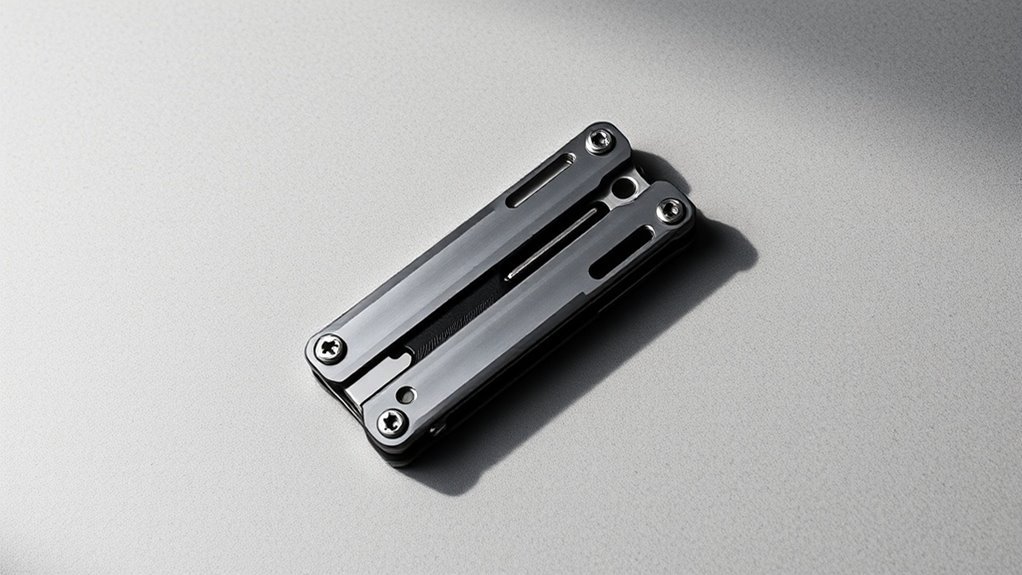
Choosing the right materials for a multitool is essential, as it balances weight and durability.
Lightweight materials like aluminum can make your multitool easier to carry, but they might sacrifice strength. Alternatively, stainless steel offers excellent durability but can add unwanted heft.
You need to evaluate what you’ll use your multitool for most. If it’s heavy-duty work, you might prioritize strength over weight. On the other hand, if portability’s key, look for advanced alloys or composite materials that offer a good mix.
Always check for protective coatings as well—they can enhance longevity without adding bulk. Additionally, innovative designs often incorporate engineering principles that maximize functionality while minimizing overall size.
Ultimately, selecting the right material guarantees that your multitool remains lightweight but durable enough to handle the tasks you tackle every day.
Compact Folding Mechanisms for Space Efficiency
While a multitool’s versatility is essential, the compactness of its folding mechanism plays an important role in how easily you can carry it.
A well-designed folding mechanism can minimize bulk, allowing the multitool to fit snugly in your pocket or bag. Systems like butterfly, pivot, or sliding designs enable various tools to nest closely together, reducing wasted space.
Additionally, using materials like lightweight alloys guarantees that even with a sturdy folding mechanism, the overall weight remains manageable. You’ll want to examine how quickly and effortlessly you can deploy the tools as well.
Moreover, considering the environment’s specific terrain types can further influence the selection of an appropriate multitool.
Ultimately, an efficient folding mechanism not only enhances portability but also contributes to a sleek and streamlined design, making it a joy to have on hand whenever you need it.
User-Centric Features and Functionality
An efficient folding mechanism not only enhances portability but also sets the stage for user-centric features that make multitools truly functional.
An efficient folding mechanism elevates portability while paving the way for essential user-centric features in multitools.
You’ll appreciate features like ergonomic grips that provide comfort during prolonged use, preventing strain on your hands. Quick-access tools guarantee you can grab what you need in an instant, making your multitool a reliable companion for everyday tasks.
Magnetic closures or locking mechanisms can boost safety, giving you peace of mind as you work. Versatile attachments allow you to customize your multitool based on your specific needs, whether you’re out camping or tackling home repairs. Additionally, incorporating accurate measurements into your multitool setup ensures precision during various tasks.
Ultimately, a user-centric design not only enhances usability but makes the multitool an indispensable part of your toolkit.
The Role of Aesthetics in Portable Design
Although functionality is essential in portable design, aesthetics play an equally important role in making multitools appealing. When you’re choosing a multitool, pleasing design often draws you in just as much as its practicality.
A well-designed tool not only sparks joy but also feels intuitive to use.
Here are three aesthetic elements that can elevate your experience:
- Color and Finish: A sleek, modern finish can be eye-catching and set the multitool apart from the ordinary.
- Ergonomic Shapes: A tool that fits comfortably in your hand signifies quality and enhances your confidence in using it.
- Compact Form: Aesthetically pleasing multitools don’t just look good; their compact design also speaks to the clever engineering behind portability. Furthermore, the choice of materials used in the tool’s construction can impact both its aesthetics and functionality.
Testing and Feedback: Iterating for Improvement
As you immerse yourself in the world of compact multitools, understanding the value of testing and feedback becomes essential for refining your choice.
Using a multitool in real-life scenarios helps you gauge its practicality. Pay attention to how easy it’s to access tools, the comfort of the grip, and overall functionality. Gathering feedback from fellow users can reveal insights you might’ve missed, helping you compare designs and features.
Don’t hesitate to reach out to communities or forums; shared experiences can lead to valuable recommendations.
Questions
What Are the Best Compact Multitools for Everyday Carry?
You’ll love the Leatherman Micro, Gerber Dime, and CRKT SOS. They’re lightweight, practical, and packed with essential tools for everyday tasks. Each one’s design makes it easy to carry, fitting perfectly in your pocket or bag.
How Do I Maintain a Compact Multitool Properly?
You’ve gotta keep your multitool clean and lubricated, right? Wipe it down after use, regularly oil the joints, and check for rust. Store it properly to guarantee it’s always ready when you need it.
Are There Multitools Specifically Designed for Certain Activities?
Yes, there’re multitools designed for specific activities, like camping, fishing, or hiking. They include features tailored to those tasks, ensuring you’ve the right tools handy for whatever adventure you’re planning. Choose wisely!
What’s the Average Price Range for Quality Compact Multitools?
Quality compact multitools typically range from $30 to $150, with about 70% of consumers spending between $50 and $100. It’s wise to compare features to find the best fit for your needs and budget.
Can I Customize My Compact Multitool?
Yes, you can customize your compact multitool! Many brands offer options for interchangeable tools, colors, and finishes. Just check with the manufacturer for specific customization choices to find the perfect fit for your needs.
Conclusion
In designing compact multitools, you’ve seen how ergonomics, materials, and user-centric features all play an essential role. By prioritizing portability without sacrificing functionality, you create a tool that’s not just effective but also enjoyable to use. Remember, “good things come in small packages.” As you continue to iterate and seek feedback, you’ll refine your designs, ensuring that your multitools meet the needs of users while being reliable companions in any task.


